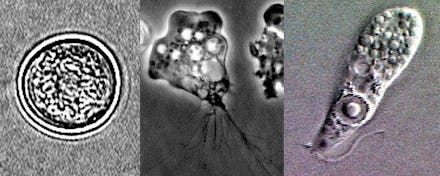An Oklahoma Swimmer Died After an Amoeba Ate His Brain

A dip in an Oklahoma lake turned deadly Wednesday after a brain-eating amoeba that thrives in warm, fresh water infected the brain of a swimmer, WGN-TV reported.
Health officials in the state have warned about the risks of the amoeba, known as Naegleria fowleri, after the victim was hospitalized in Oklahoma City last week following a swim in Lake Murray, located about 115 miles south of the state's capital, near the Texas border. The swimmer died Wednesday, according to WGN-TV.
Naegleria fowleri, commonly referred to as the "brain-eating amoeba," lives off bacteria found in sediment at the bottom of lakes and rivers, but it can sometimes rise closer to the surface and infect humans, according to the Centers for Disease Control and Prevention. It's most commonly encountered in the southern United States during the summer, when temperatures are highest, the CDC reports.
The amoeba often enters the body through a person's nose. Once inside, it travels to the brain, where it causes an infection known as primary amoebic meningoencephalitis, or PAM.
Such infections are rare, but they're almost always deadly. The fatality rate for PAM is around 98%.
Despite the scary nature of the infection, the risk of contracting Naegleria fowleri and having it develop into PAM is very low. Between 2005 and 2014, there were just 35 reported cases of brain-eating amoeba in the U.S., compared to more than 34,000 deaths from drowning between 2001 and 2010, according to the CDC.
In 2007, health officials saw a spike in Naegleria fowleri cases after six people contracted the amoeba that year, including one in Arizona, three people in Florida and two in Texas, according to the Associated Press.
Worldwide, there have been only hundreds of infections from Naegleria fowleri documented since the amoeba was discovered in Australia in the 1960s, the AP reported.
Health experts have advised swimmers to avoid allowing water to enter their noses when wading in untreated fresh water.